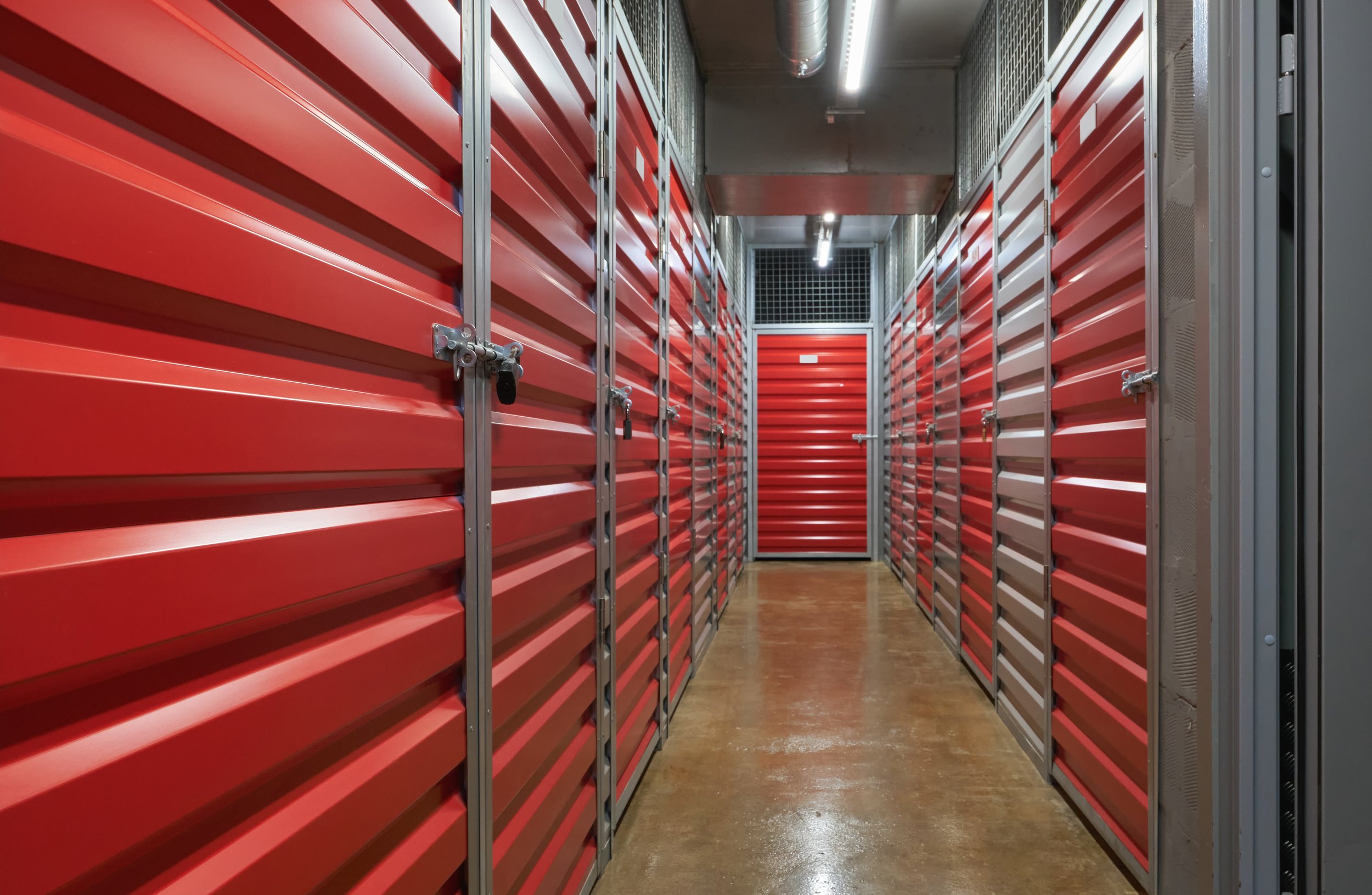Top Tips for Successful Self Storage Construction in 2025
Looking to start a self storage construction project? You’re in the right place. This article will guide you through planning, selecting the perfect site, navigating zoning laws, designing your facility, and budgeting effectively. Let’s dive into the crucial steps for a successful self storage construction journey.
Key Takeaways
Thorough planning, including conducting a feasibility study and setting SMART goals, is essential for successful self-storage construction projects.
Choosing the right location, considering demographics, competition, accessibility, and visibility, significantly influences the success of a self-storage facility.
Effective project management, including budgeting, scheduling, quality control, and engaging experienced developers, is critical for delivering a self-storage construction project on time and within budget.
Planning Your Self Storage Construction Project
Initiating a storage construction project requires meticulous preparation, which is vital for the success of the endeavor. This initial step lays down the groundwork for subsequent phases, helping to prevent expensive errors and optimize your self storage investment. The first task in this process includes defining what kind of self storage facility you aim to create, followed by performing a feasibility study that evaluates market needs and economic practicality. Having clear objectives steers your venture from its inception through to its realization.
Executing a feasibility study alongside establishing SMART goals are essential actions for synchronizing your storage construction project with prevailing market demands while ensuring judicious use of resources.
Conducting a Feasibility Study
Undertaking a feasibility study is an essential initial action when considering the risks and potential returns associated with your self-storage project. This analysis scrutinizes the market’s demand, examines rival offerings, and delivers projections of financial performance to enable knowledgeable decision-making. Conducting thorough market research and customer surveys can reveal consumer preferences that could shape your storage facility to meet regional requirements.
Crucial to this feasibility study are the financial forecasts that provide you with a glimpse into the possible earnings from your storage enterprise. Setting up a preliminary budget early on offers insight into whether or not it is financially sensible to proceed with significant funds allocated for design elements and subsequent construction phases.
It should be noted that existing competitors achieving high occupancy rates serve as robust signals pointing towards strong local demand for additional self storage solutions in your targeted vicinity.
Setting Clear Goals
Establishing SMART objectives that are specific, measurable, achievable, relevant, and time-bound is vital for steering your self storage construction project efficiently. These objectives aid in harmonizing the different elements of the construction phase to ensure resources are utilized in a manner that’s both efficient and effective.
Goals that can be precisely defined and measured allow for improved monitoring of progress and achievement within the span of the project. Articulating explicit goals not only propels the construction process, but also supports strategic decision-making consistent with your self storage facility’s overarching ambitions.
Selecting the Perfect Site for Your Self Storage Facility
Choosing the right location for your self storage building is a pivotal decision that impacts the layout, design, and services you offer. The perfect site aligns with your facility’s concept and meets local market demands. Assessing local real estate conditions helps identify areas with high demand and limited competition for your self storage business.
Evaluating demographics, competition, accessibility, and visibility are key factors in choosing a suitable location for your facility.
Evaluating Demographics and Competition
It’s essential to grasp the local population’s characteristics when selecting a site that aligns with the requirements of prospective self-storage clientele. An area sporting a higher average income for households usually indicates a stronger need for self-storage facilities. Regions with a substantial proportion of housing units occupied by renters often see an uptick in demand as inhabitants are likely to move more often and have limited space.
Careful analysis of these demographic elements, along with consideration of nearby competing businesses, is vital to ensure your storage facility can both draw in and keep customers successfully.
Accessibility and Visibility
A self-storage facility’s visibility from busy roads significantly influences customer awareness and traffic. High visibility and easy access enhance customer convenience and attract more clients. A well-positioned facility can significantly influence customer traffic, rental rates, and overall success.
Easily accessible and highly visible sites significantly attract more customers to your facility.
Understanding Zoning and Permitting Requirements
Ensuring compliance with zoning and permitting guidelines is essential for the successful construction of your self storage facility. Each municipality enforces specific zoning rules that govern land use, which can necessitate rezoning when the plot isn’t already allocated for self storage purposes. Collaborating with seasoned professionals in the sphere of self storage development is advisable to confirm that your project meets all applicable local regulations.
When a developer receives permitted usage status, they can advance to securing building permits without undergoing public hearings. Conditional usage might entail extra limitations set by local authorities. It’s equally important to verify that your contractor possesses the necessary licensing and insurance to protect your investment in this venture.
Designing Your Self Storage Facility
The design of your self-storage facility, including the selection of self storage units, is a key factor in its success. The right self storage design enhances customer satisfaction and operational efficiency. Choosing the right location also influences the facility’s design and layout. Understanding local demographics helps in tailoring services to meet customer needs.
Choosing the right unit sizes, incorporating climate-controlled units, and considering layout and security are vital design aspects.
Choosing the Right Unit Sizes
To ascertain the most appropriate assortment of unit sizes for self storage, an in-depth analysis of the market is imperative. The range of sizes available at a storage facility should be tailored to cater to the specific requirements and demands of prospective customers within your locality. It’s crucial for a thriving storage establishment to establish a blend of units that caters effectively to different customer needs and tastes.
By providing an array of unit sizes, you can draw in a wider spectrum of clientele, guaranteeing that your facility can accommodate an extensive variety of storage necessities.
Incorporating Climate Controlled Units
Introducing climate-controlled units to your self storage facility may broaden the spectrum of clients for your storage business. Such units safeguard delicate possessions by maintaining a consistent atmosphere, shielding them from intense temperatures and moisture levels.
These particular spaces can lower humidity levels, thereby preventing damage to stored items and enhancing the appeal of your storage business. By offering these climate-regulated options, you set apart your facility in a competitive market while catering to distinct customer needs for safekeeping their belongings.
Layout and Security Considerations
Enhancing your storage facility’s layout is key to bolstering both its efficiency and security. Planning the space meticulously ensures optimal use of available space while also improving monitoring capabilities and access management.
By integrating sophisticated security measures, including surveillance systems and regulated entry protocols, you can greatly elevate the safety of your storage facility. This improvement in protection will likely appeal to customers who prioritize security.
Using Pre Engineered Metal Buildings (PEMBs)
The construction of self-storage facilities utilizing pre-engineered metal buildings (PEMBs) presents a host of benefits, as these structures are specifically optimized for efficiency and functionality within the realm of storage. Notably lighter by up to 30% compared to conventional steel storage buildings, PEMBs enable cost savings on materials without compromising on structural strength or durability against extreme weather conditions and earthquakes.
The sophisticated design and production techniques associated with PEMBS lead to substantial reductions in overall construction expenses. Another major advantage is the expedited assembly timeframe. Such buildings can be completed in nearly half the duration required for traditional building methods, which translates into decreased labor expenditures and accelerated project completion schedules.
Budgeting for Your Self Storage Construction Project
Creating a construction budget is the first task in planning a self-storage construction project. Key budget items include land, grading, buildings, and access control, among others. Effective project management focuses on bringing the project in within budget and on time.
Estimating construction costs and managing your budget are crucial for the financial success of your project.
Estimating Construction Costs
Estimating construction costs is a critical step in planning your self-storage construction project. Average construction costs can range from $25 to $75 per square foot, depending on the facility type. Single-story drive-up units typically cost between $40 and $45 per square foot, while climate-controlled facilities range from $60 to $70 per square foot.
Accurate labor cost forecasting significantly impacts the overall budget.
Managing Your Construction Budget
It’s essential to maintain vigilant oversight and reallocation within your construction budget as the project progresses. Allocating 25%-30% of the overall budget for acquiring land is vital to guarantee sufficient resources are available for the building phase. Keeping a close watch on spending and changes in material costs is critical for preserving fiscal discipline.
Successful management of a construction project hinges on maintaining transparent communication, ensuring well-structured timelines, and harmonizing coordination among different tradespeople to reduce instances of delays and prevent exceeding cost expectations.
Engaging with Self Storage Developers and Consultants
In the self storage industry, embarking on a storage construction project necessitates collaboration with proficient self storage developers and engaging a seasoned self storage consultant. These experts are indispensable in guaranteeing that all aspects of your project—from production to transportation and installation—are executed with an emphasis on excellence. Throughout every stage of the construction process, sales representatives are instrumental to the triumph of your initiative.
Securing partnerships that emphasize quality assurance not only offers reassurance but also helps avoid expensive blunders throughout the build phase. Cultivating trust and fostering connections within the realm of self-storage is pivotal since repeat or referral clients account for approximately 70% of yearly business, highlighting their significance in this sector’s success.
Project Management Best Practices
Effective project management is vital for the successful completion of your storage project. Establishing a clear project timeline helps in tracking progress and managing resources effectively. Hiring experienced professionals and creating a detailed plan with clear milestones are essential for keeping the project on schedule.
Scheduling, timelines, and quality control measures are critical components of effective project management.
Scheduling and Timelines
It is essential to establish a practical timetable to ensure the on-time completion of self storage construction endeavors. As the project progresses, preliminary budget approximations should be refined into comprehensive vendor proposals.
Proper project management necessitates keeping an accurate and detailed schedule while also making sure that every stakeholder understands and agrees with the objectives and time constraints of the storage construction project.
Quality Control and Inspections
Ensuring that all work adheres to set quality benchmarks during the construction process, regular inspections are crucial. By conducting quality control assessments at different phases, problems can be detected promptly, thereby diminishing the likelihood of expensive redoing of work. Early detection of issues via these checks contributes to an effective construction workflow and notable savings in cost.
Marketing Your New Self Storage Facility
Promoting your newly established self storage facility is essential to draw in clients and guarantee your enterprise’s prosperity. Setting up a Google Business Profile is the central conduit for internet visitors. Motivating patrons to post online reviews can tremendously sway prospective tenants, with over 90% consulting reviews prior to finalizing their choices.
Investing in professional-grade images of your storage facility can foster confidence and improve your presence within Google search results. It’s critical to revamp signage as well since around 40% of new clientele find self storage locations during drive-bys.
Summary
In essence, the creation of a self storage facility requires careful consideration in planning, choosing the location, crafting its design, budget management, and overseeing the project. Collaborating with seasoned developers and advisors while complying with local zoning and permitting laws as well as executing impactful marketing approaches can guarantee that your storage construction venture is triumphant.
Committing to this undertaking involves persistence and an eye for specifics. The fruits of labor from a proficiently managed self storage establishment are significant. Armed with knowledge and guidance presented here, you have what it takes to materialize your concept into existence.
Frequently Asked Questions
Why is a feasibility study important for a self storage construction project?
A feasibility study is crucial for a self-storage construction project as it evaluates risks, market demand, and financial projections, enabling informed decision-making.
This thorough analysis ultimately increases the likelihood of project success.
What are SMART goals, and why are they important?
By following the SMART criteria—Specific, Measurable, Achievable, Relevant, and Time-bound—for setting goals in projects, you can increase clarity and focus, which is crucial for efficient planning and resource management. This approach contributes to improved project results.
How do I choose the right location for my self storage facility?
To choose the right location for your self-storage facility, prioritize areas with favorable local demographics, minimal competition, and excellent accessibility and visibility.
This strategic approach will help attract and retain customers effectively.
What are the benefits of using pre-engineered metal buildings (PEMBs) in self storage construction?
Using pre-engineered metal buildings (PEMBs) in self-storage construction provides significant cost savings, rapid assembly, and enhanced durability against severe weather conditions.
These advantages make PEMBs a practical choice for developing resilient storage facilities.
How can I effectively market my new self storage facility?
To effectively market your new self-storage facility, establish a Google Business Profile, encourage online reviews, and utilize high-quality photographs.
Implementing upgraded signage and referral programs will also help attract and retain customers.





